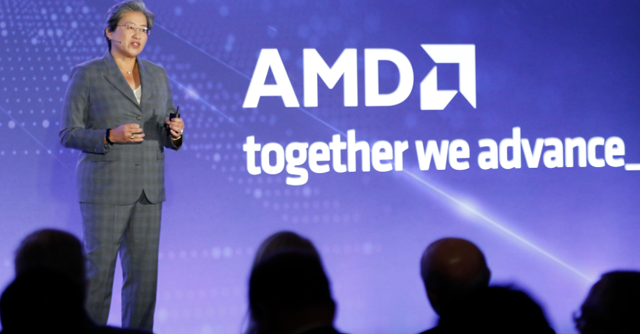
AMD acknowledges 'natural' PC market slowdown, to focus on HPC, data centre in 2022

US-based chipmaker, Advanced Micro Devices (AMD), acknowledged a ‘natural’ period of slowdown in global shipments of personal computers (PCs) through 2022. Speaking at the company’s annual Financial Analyst Day on Thursday, June 9, Lisa Su, president and chief executive of AMD, said that the slowdown in PC shipments this year is largely expected, as the industry was coming off two years of “very strong” growth.

The company announced a forecast of its next generation of products, also detailing the areas where AMD will focus going forward. Alongside the introduction of its new generation PC products that include 4nm Phoenix Point accelerated processing unit (APU) in 2023 and an ‘advanced node’ Strix Point APU in 2024, AMD will also focus on high-performance computing (HPC), artificial intelligence (AI), data center and the internet of things (IoT) ecosystem through embedded computing products.
Shipment slowdown of PCs around the world has been largely echoed across market reports and by industry stakeholders. In a recent interview with Mint, Ketan Patel, managing director of HP India, also said that with the PC industry coming off a phase of pandemic and work-from-home-driven demand, it is natural for PC shipment growth to slow down from close to 40% in India – seen in 2021 – to around 10% this year.
“From the cloud and PCs to communications and intelligent endpoints, AMD’s high-performance and adaptive computing solutions play an increasingly larger role… our expanded portfolio of leadership compute engines provide AMD with significant opportunities to deliver continued strong revenue growth with compelling shareholder returns as we capture a larger share of the diverse $300 billion market for our high-performance and adaptive products,” Su said.

In a call with analysts, Su further added that over the past year, AMD has seen “tremendous” increase in demand for products in data center, cloud computing and AI.
Focusing on this, the company introduced what it claims is the “world’s first” data center APUs – the AMD Instinct MI300. The latter will reportedly offer 8x better performance than its previous generation products in AI training tasks, and uses a 3D chiplet design in its integrated graphics processing unit (GPU) – alongside support for the company’s new Zen 4 core architecture, and high bandwidth memory to handle HPC workloads.
An APU is an integrated processor that includes the central processing unit (CPU) and GPU cores within a single system-on-chip (SoC) – while using shared architecture for the amount of memory available in a system. It is this shared memory architecture that separates an APU from mainstream CPUs with integrated graphics chips.

AMD also introduced a new AI software roadmap – which will allow developers to build AI applications of varying sizes and volumes for machine learning frameworks and other HPC systems.
On the consumer front, despite a slowdown, AMD announced a slew of new products. These will include the Phoenix Point APU, based on 4nm Zen 4 CPU and RDNA 3 GPU cores, which will power thin and light gaming laptops in 2023. The Strix Point APU, which will be detailed later, will come in 2024.
AMD also introduced its high-end desktop (HEDT) flagship processor, the Threadripper 7000, based on Zen 4 cores. The latter will come with up to 96 cores and 192 threads, and offer ultra-high end and extreme workstations with a new chip to use next year.

